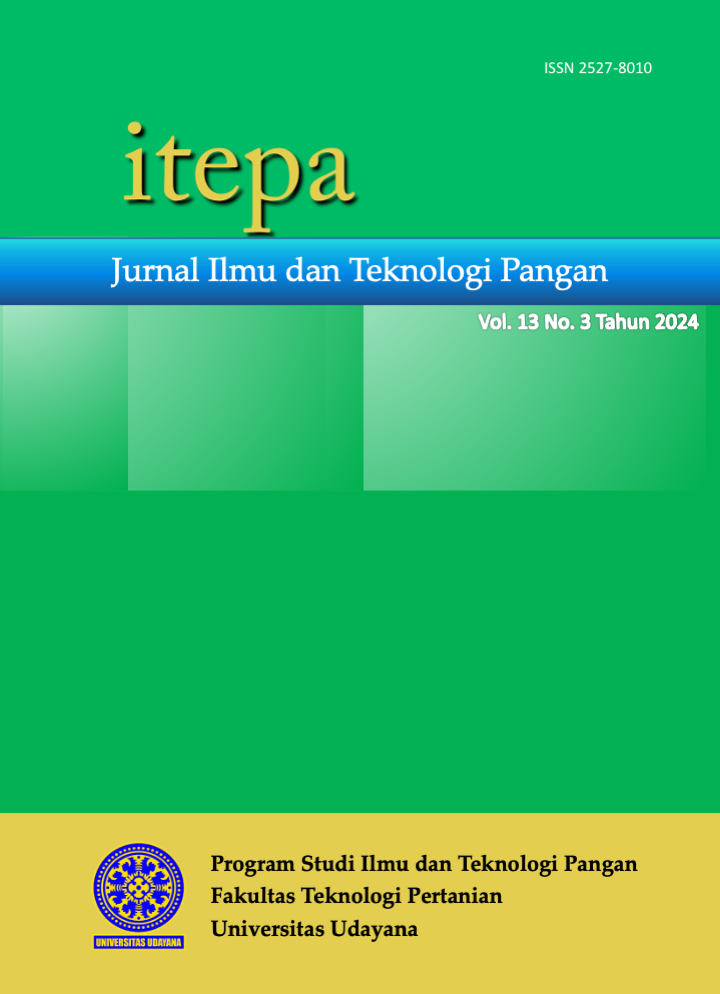Perbandingan Tepung Kedelai (Glicine max L. Merril) dan Tepung Hanjeli (Coixolacryma jobioL.) terhadap Karakteristik Snack Bar
Abstract
Snack bars are solid foods in the form of bars (bars) made from several ingredients such asicereals, nuts or dried fruit mixed with a binder. Until now, snack bars on the market are made from imported raw materials such as wheat and soybeans. Several studies had been conducted using soybeans as a protein source combined with local food ingredients. One of the local foodstuffs with high nutritional value that has not been widely used is hanjeli which is rich in calcium. Thisiresearch aimed to determine the effect of theiratio of soy flour and hanjeli flour on the characteristics of snack bars and to find out the right ratio of soy flour and hanjeli flour to produce a snack bar with the besticharacteristics. This research used the Completely Randomized Design (CRD) method with a comparison treatment of soy flour and hanjeli flour with 6 levels, namely 100:0, 90:10, 80:20, 70:30, 60:40, and 50:50. The treatmentiwasirepeated 3 times to obtain 18 experimental units. The dataiobtained was analyzediusing variance and if the treatment had a significant effect, it was continued with the Duncan Multiple Range Test. The results showedithat the comparison of soybean flour and hanjeli flour had aisignificantieffect (P<0,05) on water content, ash, protein, fat, carbohydrates, crude fiber, texture, sensory properties, color, texture and overall acceptability, but had no significant effect. (P>0.05) on the sensory properties of aroma and taste. The 50:50 ratio treatment produces snack bars with the best characteristics, namely with a water content of 27,77%, ash content of 1,77%, protein content of 15,19%, fat content of 12,55%, carbohydrate content of 43,06%, crude fiber 4,15%, calcium content 581,70 mg/100g, texture 14,93N, color rather like, aroma like, texture rather like, taste like and overall acceptability rather like.
Keywords: snack bar, hanjeli flour, soybean flour, calcium





